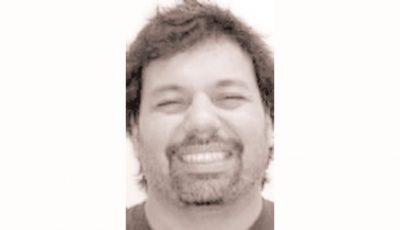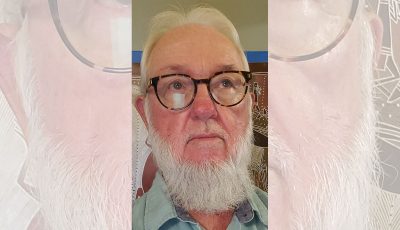Thomas J. Camacho
Last weekend, we buried the remains of Thomas J. Camacho at CK, the low key fellow who was friend to the disability community and folks who came upon his acquaintance in the hats he wore in our midst, most recently that of transport and transit tsar.
I actually had to do a double take on the announcement, thinking that it might be our beloved bishop, the native of and emeritus of the Diocese of Chalan Kanoa who retired five years ago at 76, who might have decided to meet his maker. We apologize to the bishop for messing up with his schedule. Then a mutual friend confirmed that it was actually the younger Tom of our acquaintance who was interred!
We understand that Tom came from a parks and recreation role in his younger public official days before he took a facilitative role in promoting the cause of the differently-abled (my term for those characterized as “disabled”), started to plot the transit infrastructure of the Commonwealth, and promoted the abundance of geothermal energy in our sovereign jurisdiction.
I have two children with autism (the polite term is Autism Spectrum Disorder, or ASD). Their different abilities cost me a marriage and sent me reeling to this side of the globe while they lived outside of D.C., and now call Ohio home. Happily, I landed in the CNMI, gravitated to the Parents’ Association of Children with Autism (PACA) with the Cabreras, et al, and its broader offspring (STaRPO), the Saipan, Tinian and Rota Parents’ Organization gathering families focused on autism, cerebral palsy, and Down’s syndrome.
I stepped back from the organizational affairs of the autism society when I took on teaching in the Public School System but as new friend Joe Kaipat says when I told him I used to be a member of MINA, he categorically said, “You are still a member!” I suppose that holds true with the developmentally challenged groups I associated with.
It was in his capacity as coordinator of a governmental office on disabilities that Tom Camacho, in one of the public functions he organized to honor individuals and families, had me up for an award that I declined. I knew others would be encouraged in their voluntary efforts if they were recognized with an award. Since I was already vocated (don’t look for the term in your dictionary, it don’t formally exist), I was only too content to take the backseat.
With award-conscious CNMI, the act of refusal might have been a faux pas on my part, and a slap in the face to the good graces of Tom. Our dear friend distanced himself from that moment on, though still remaining his affably civil self. I kept up with what he was doing even when he moved close to the Governor and the Legislature, until I left to teach at a university in China.
Tom’s middle name is “Jesus,” one that Christians often get named after, from a serious iconic idol (aka, “Lord” in the medieval metaphor), in the same way as kids are named “Mahmoud and/or Mohammad” in Islam. This acknowledges a side of Tom that might have defined a vocation more than the run-of-the-mill Joe de la Cruz, or Marja Attao! Which is to say, we took Tom a bit more seriously than usual.
We are often asked what the point is in writing our narratives in this column, as if there has to be a point, a message as it were, for readers to “get,” leaving the onus of communication on the writer who would have done a bad job “if the reader failed to see the point.”
I go back to Picasso when asked about the meaning of his depiction of the bull and the horse in Guernica. The “bull” and the “horse” are Spanish art mainstay so their presence in the painting was not surprising. What was a surprise was Picasso’s answer: “…. this bull is a bull and this horse is a horse…. If you give a meaning to certain things in my paintings it may be true, but it is not my idea to give this meaning…. I make the painting for the painting. I paint the objects for what they are.”
There are those who will strain to find a meaning in the 55-year existence of Thomas Camacho. Not unlike Mr. Picasso, there is no absence of meaning in the life of Tom but the more pertinent question is what we derived from having encountered him, even as we suggest that the more important question in the encounter with our narrative is what sense, feelings, thoughts, and necessary deed are evoked from the reader.
Sharing those with us might result in a dialogue, but that assumes a connection of mutual respect that some of our Internet commentators hiding behind facades do not like making.
Tom is gone. At 55 (1960-2015), he comes short of the current life expectancy measure of U.S. citizens, though not too distant from many in the Chamorro and Carolinian folks of the realm. But as I noted in a local obit: “Tom was a quiet force among the differently-abled community. The natural response is to grieve the years that we thought he should have had more of, but we can also celebrated the completion of a 55-year journey that was solely his own to live, and for which we are eternally thankful. Rest easy, Tom.”
Indeed, as he represents everyone, rest easy, Tom!



























